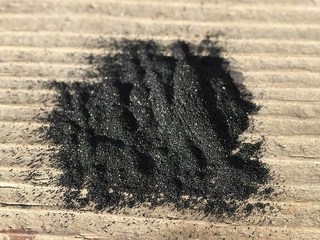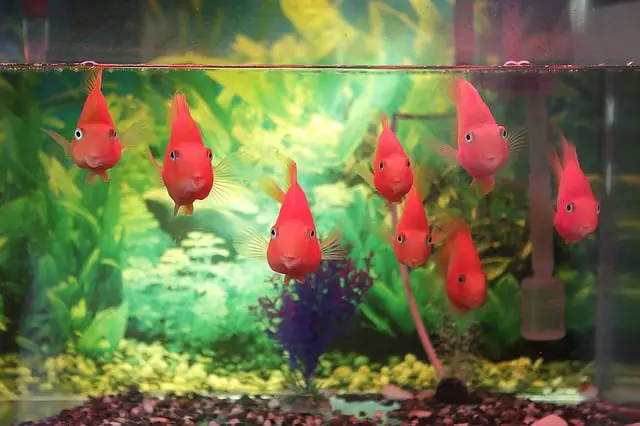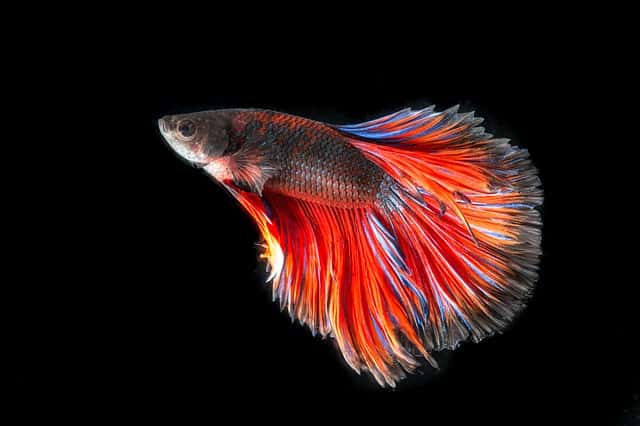For years, I have had charcoal in my aquarium filters – whether it was a freshwater or a saltwater tank. I have been trying to grow live plants in a 10-gallon freshwater tank lately and decided to take the charcoal out so as not to impede the plants growth and to see what would happen.
Activated charcoal is not required in an aquarium filter. Charcoal in an aquarium filter can help to remove chlorine and chloramine as well as other molecules found in tap water, so it is beneficial for some things. If you are medicating an aquarium, the charcoal should be taken out of the filter as it will absorb the medication – thus minimizing its full potential to heal the sick fish.
There are pros and cons to using charcoal in an aquarium. Do you need to have charcoal in an aquarium filter to have a successful tank? No, you sure don’t. There are times you might want to include it in the filter and then other times when it’s okay not to have any.
In this article, I will do my best to clear up why you might want to use it and what not. I will also use activated carbon and charcoal interchangeably as they are the same thing. Let’s get started.
What Does Charcoal Do in an Aquarium Filter?
As mentioned above briefly, activated charcoal does have some benefits. Just putting it in the filter though without understanding this is potentially a waste of time and money and might have negative effects on your fish tank.
First, what is charcoal/activated carbon? It is made from carbon rich materials that are heated to very hot temperatures. It is later formed as you see it when purchased. In the aquarium world, activated carbon can be used in either pellet or powder form.
Using charcoal is an excellent way of removing undesired molecules and metals in tap water that might be fine for you to consume however, letting a fish live in it might be detrimental to their health.
These elements include (but aren’t limited to) are chlorine, chloramine, heavy metals, and organic materials.
Activated charcoal can be used to both clean-up a stinky fish tank and make the water clearer than if you weren’t using it.
On the other hand, using charcoal doesn’t help to rid the aquarium water of other elements such as phosphates, ammonia, nitrite and nitrate. If charcoal did remove these things, then there’d be no real reason not to use it in the filter.

Can You Use Activated Carbon in a Planted Tank?
Technically, you can go ahead and put charcoal in your planted tank. I say technically because yes, you can and with some live plants, they might be fine, but others might not be.
The problem, however, is that activated carbon will clear so much out of the water that it’s actually stripping some of the good bacteria that plants need to survive. This is what you want when using charcoal although, if you’re growing plants, then you should reconsider using it.
Plants thrive on CO2 and nitrate in the water. They absorb the CO2 and nitrate, which improves the quality of the water and makes the environment safe for fish.
It’s my understanding that charcoal will scrub the water and remove some of the CO2. If this is true, then the charcoal is actually removing some of what plants need to live. Therefore, using charcoal in a tank with plants isn’t a good idea.
In addition, if you are using any type of aquarium live plant fertilizer, you’ll be wasting your money if you leave the charcoal in the filter. Charcoal will absorb the plant’s food, rendering it useless in the tank.
Charcoal does the same with medications so it should only make sense that it will absorb plant fertilizers.
How Often Should I Change the Charcoal in My Fish Tank?
Charcoal can be left in the aquarium filter for 6 to 8 weeks. The packaging will tell you to change it out every 30 days or so but that’s just a company trying to sell a product.
If you have put charcoal in the filter for a specific task such as cleaning medication out of the water, then changing it every, one to two weeks is fine for a month or so.
If you choose to have charcoal in your filtration all the time, then go with the 6 to 8-week time frame. I have left mine in for a few months at a time with no issues arising.
Can Activated Carbon Kill Fish?
I have never heard of anyone having an issue with using too much carbon. This doesn’t mean you should go ahead and jam the filter up with it! Always use the recommended amounts in your tank, even if you probably can’t put too much carbon in a fish tank.
Usually filters have a spot to place these types of mediums so you can only put so much in, regardless.
Technically, if you use a powdered carbon in place of pellets, you can pack more of it in the same amount of space. All this will do though, is jam up the water flow in your filter, which in turn could cause health issues for your fish.
So, just put in the recommended amount for your filter size. My rule-of-thumb is the amount of charcoal should not exceed the size of the filter sponge. They both should be about the same size.

Does Activated Carbon Remove Ammonia?
Unfortunately, activated carbon doesn’t remove ammonia. If you are having problems with too much ammonia in your tank, try these things to troubleshoot the issue.
- Let your fish tank’s water cycle properly when it is first set up. This is called the Nitrogen Cycle and until your water parameters are in check, you should not be adding fish to the tank.
- You can purchase filter medium that is made solely for the purpose of stripping ammonia from the water. Here’s an Ammonia remover product you can purchase on Amazon.
- Make sure you are treating all tap water you put in your tanks. You can let tap water sit out for 24 hours and that will clear-up most of the chemicals in the water, however nothing works better than using a water conditioner.
- I would recommend frequent water changes. If you are not changing the water at least every two weeks, then you better start doing so. I do water changes once a week on my freshwater tanks.
- Lastly, don’t overfeed your fish. I would guess that more than 75% of all fish owners overfeed. Your fish can survive on a lot less than you’re probably giving them and feeding them only what they need is healthier for them in the long run. Overfeeding affects not only ammonia levels but also increased dangerous nitrate, which will kill fish if the levels are left unchecked in your tank.
Conclusion
Using activated carbon in a fish tank when its just getting started is a good idea. The charcoal helps to clear out harmful elements of the water, making it safe for you to add fish once the tank has cycled.
That said, if your tank has been up and running for 6 months or more successfully with fish and no apparent issues with the water, I would try taking the charcoal out. Monitor how the fish are doing and replace if they seem to start acting differently.
I expect everything should be fine. You can always add charcoal quickly if after a while you feel you need to and the charcoal will go to work immediately.
So, the final verdict is in and no you do not need to have charcoal in your aquarium filter, unless you are specifically trying to clean out the water. If you have recently used medication or are finding the water isn’t as clear as you think it should be, then try charcoal.
Hopefully, this article has been of help to you. Thanks for reading and good luck with your aquarium hobby.
Related Posts
Are Saltwater and Freshwater Filters the Same? (Learn What Filter You Should Use)
HOB VS Canister Filter – Which is Best for You?
How Often Should You Clean Your Aquarium Filter




